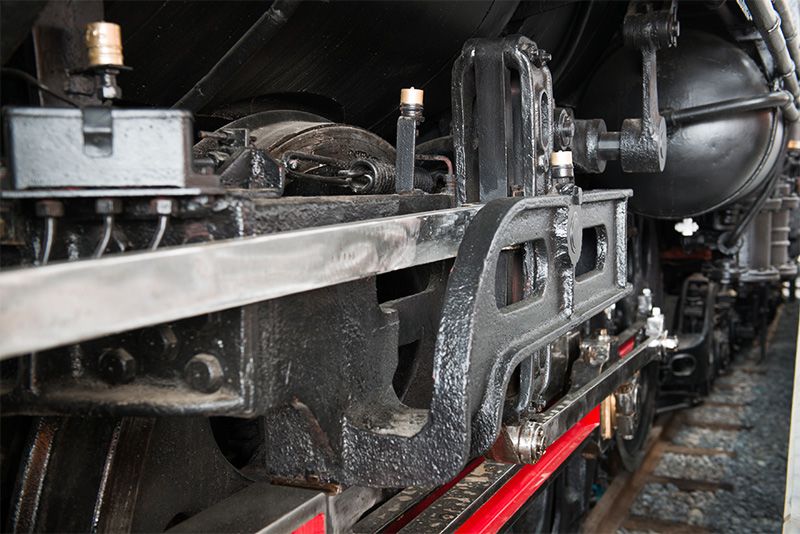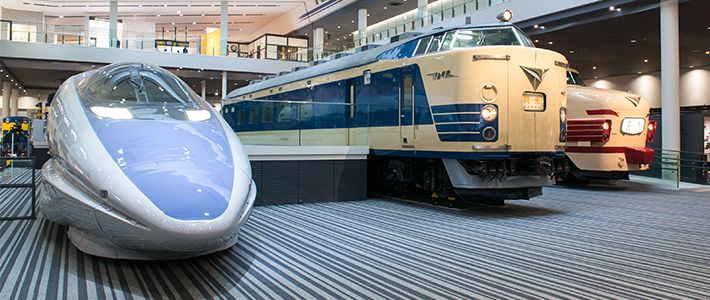
Kyoto Railway Museum (Photo Gallery)
Guideto Japan
Culture- English
- 日本語
- 简体字
- 繁體字
- Français
- Español
- العربية
- Русский
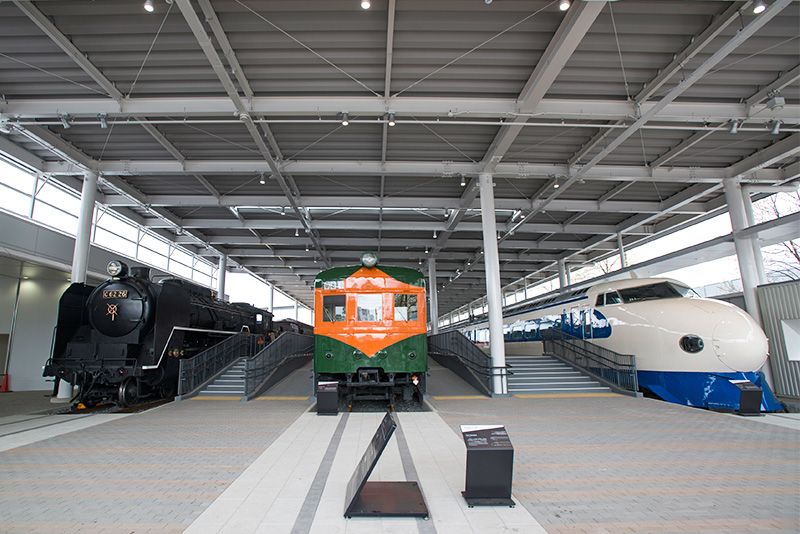 The Promenade is just inside the museum. From left, a class C62 steam locomotive (built 1948), an 80 series electric train (built 1950), and the 0 series Shinkansen (built 1964).
The Promenade is just inside the museum. From left, a class C62 steam locomotive (built 1948), an 80 series electric train (built 1950), and the 0 series Shinkansen (built 1964).
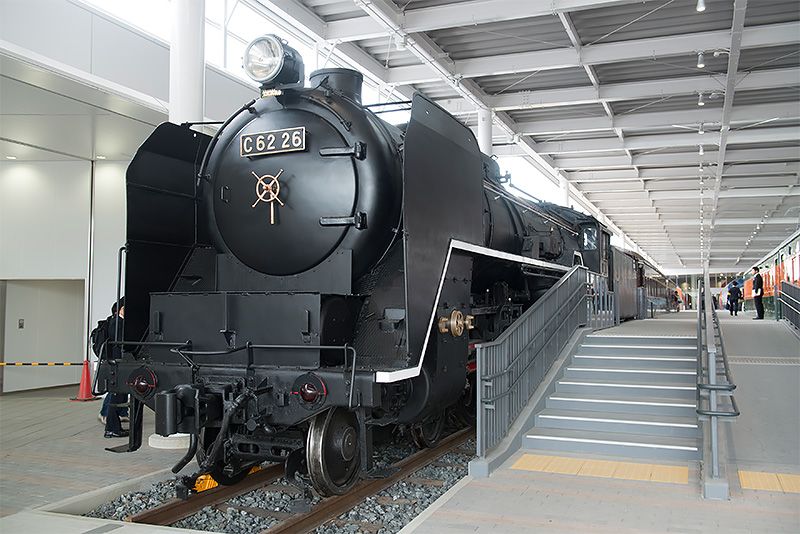 The C62 was Japan’s largest passenger steam locomotive.
The C62 was Japan’s largest passenger steam locomotive.
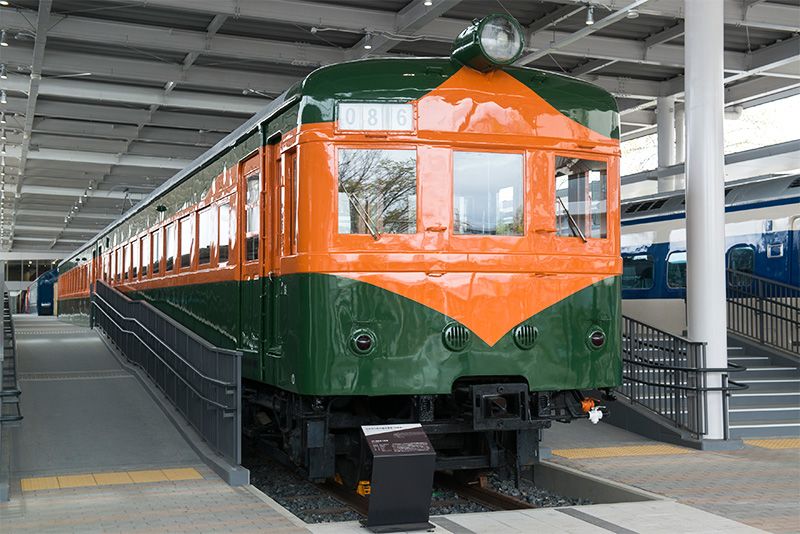 The 80 series was the first long-distance train of the postwar era.
The 80 series was the first long-distance train of the postwar era.
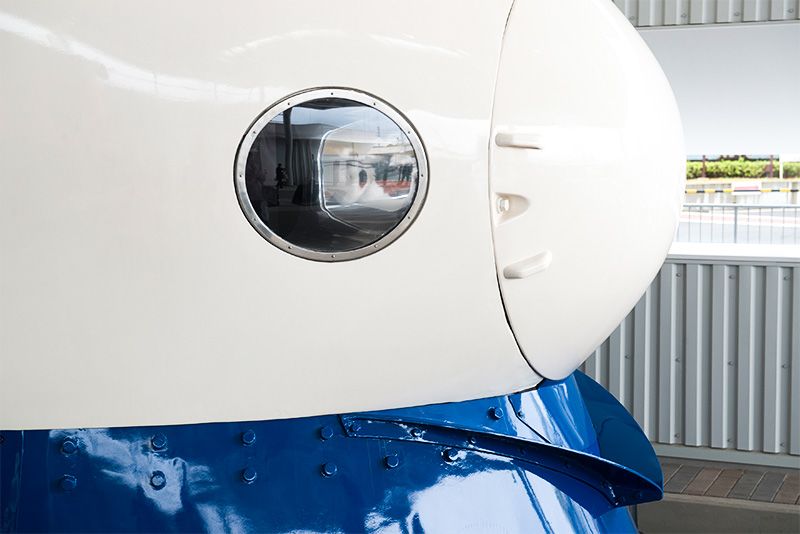 The nose of the 0 series Shinkansen, the “dream super express.”
The nose of the 0 series Shinkansen, the “dream super express.”
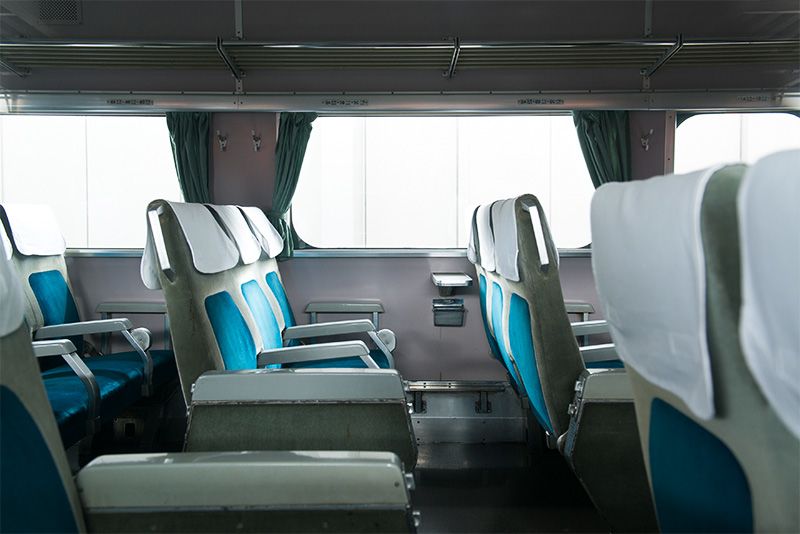 Standard seating in the 0 series Shinkansen.
Standard seating in the 0 series Shinkansen.
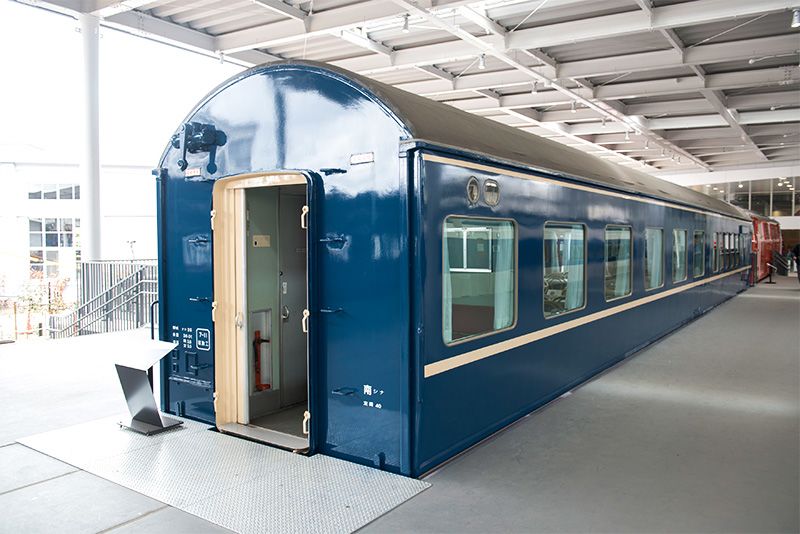 The dining car from the “Blue Train” sleeper 20 series (built 1970).
The dining car from the “Blue Train” sleeper 20 series (built 1970).
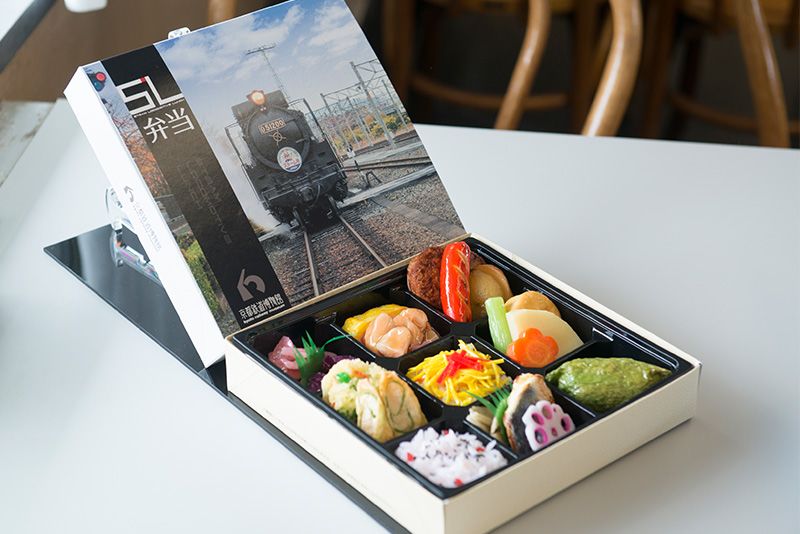 Museum visitors can buy bentō lunches and eat them seated in the dining car.
Museum visitors can buy bentō lunches and eat them seated in the dining car.
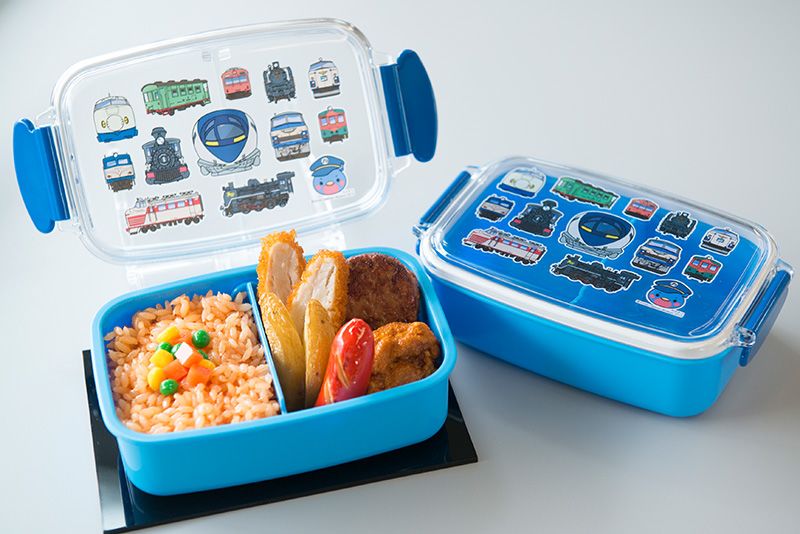 A children’s bentō lunch. The cute boxes can be reused after purchase.
A children’s bentō lunch. The cute boxes can be reused after purchase.
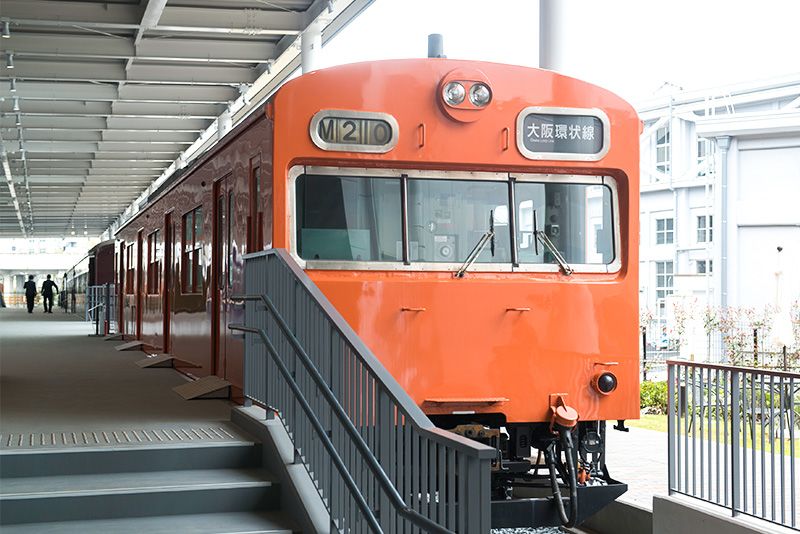 The 101 series commuter train (built 1964) was used on the Osaka Loop Line.
The 101 series commuter train (built 1964) was used on the Osaka Loop Line.
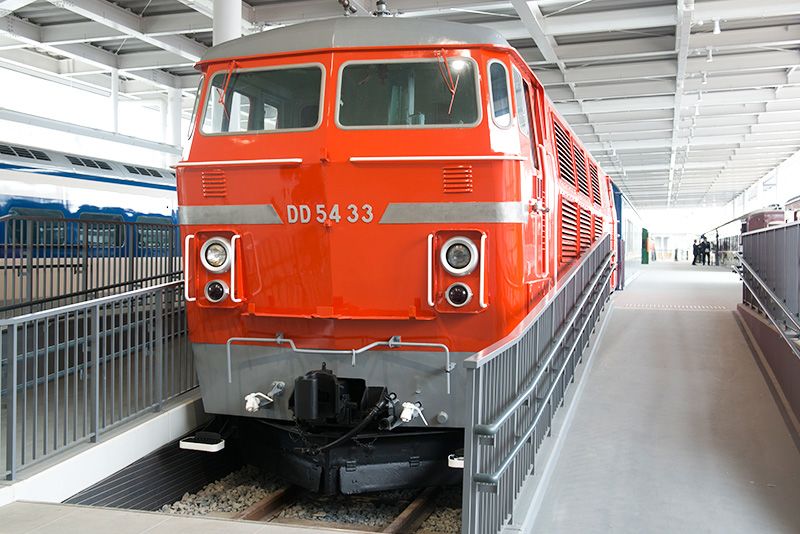 The DD54 diesel train (built 1971) used a West German engine.
The DD54 diesel train (built 1971) used a West German engine.
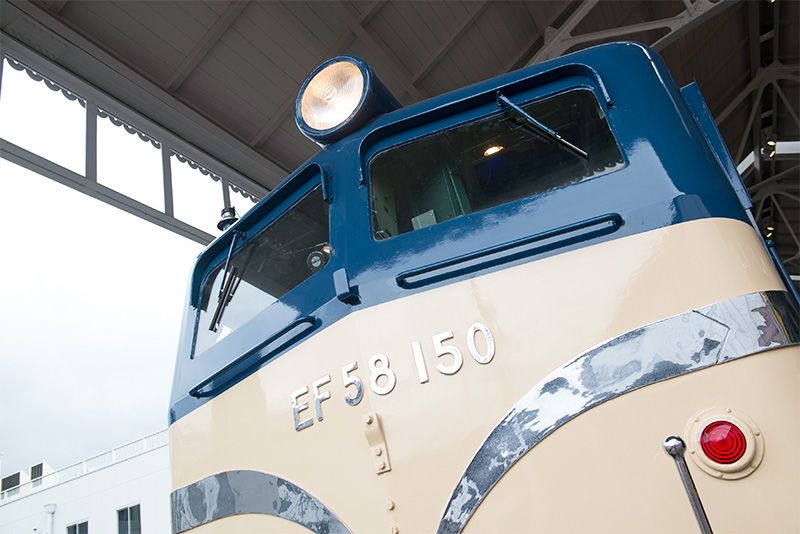 The EF58 (built 1958) was a standard passenger train in the postwar era.
The EF58 (built 1958) was a standard passenger train in the postwar era.
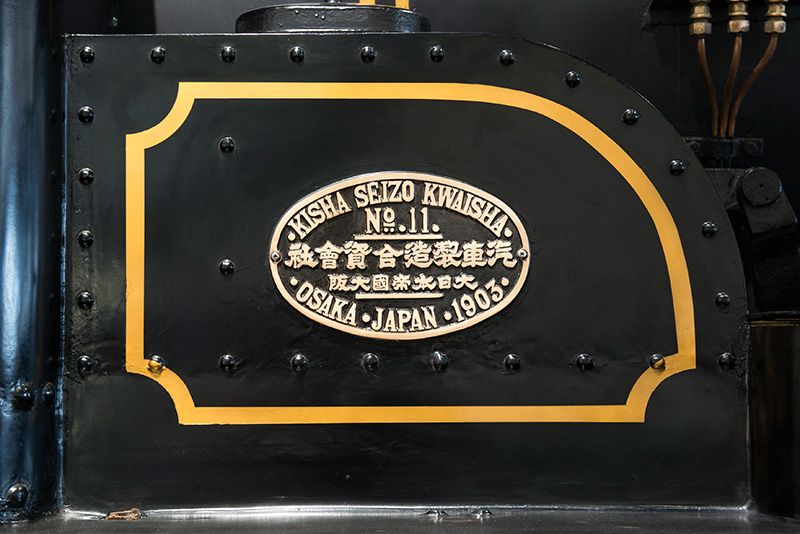 The nameplate of the 233 (built 1903), a class 230 steam engine. This class was Japan’s first mass-produced steam locomotive.
The nameplate of the 233 (built 1903), a class 230 steam engine. This class was Japan’s first mass-produced steam locomotive.
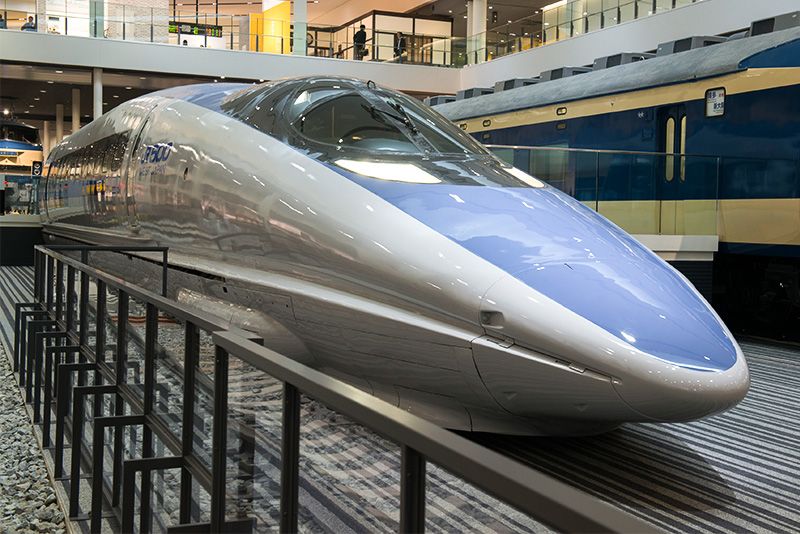 The 500 series Shinkansen (built 1996) was the world’s first passenger train to operate at speeds of 300 kilometers per hour.
The 500 series Shinkansen (built 1996) was the world’s first passenger train to operate at speeds of 300 kilometers per hour.
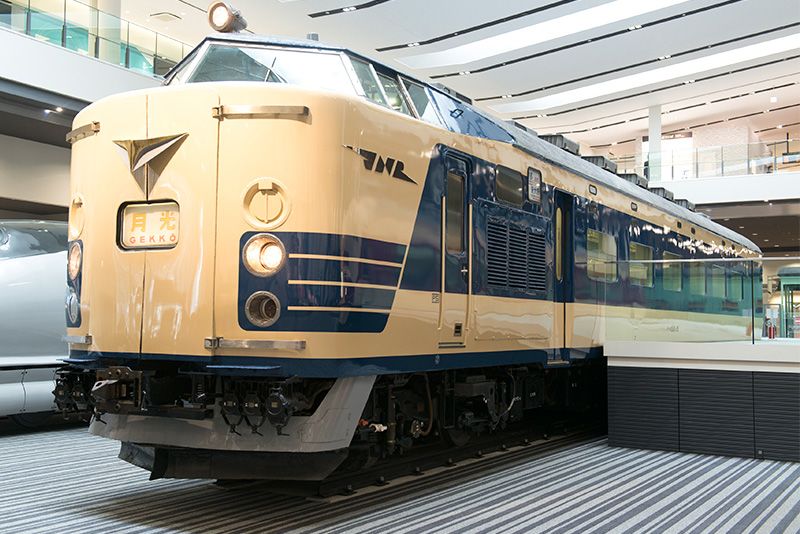 The 581 series express with sleeping cars (built 1968).
The 581 series express with sleeping cars (built 1968).
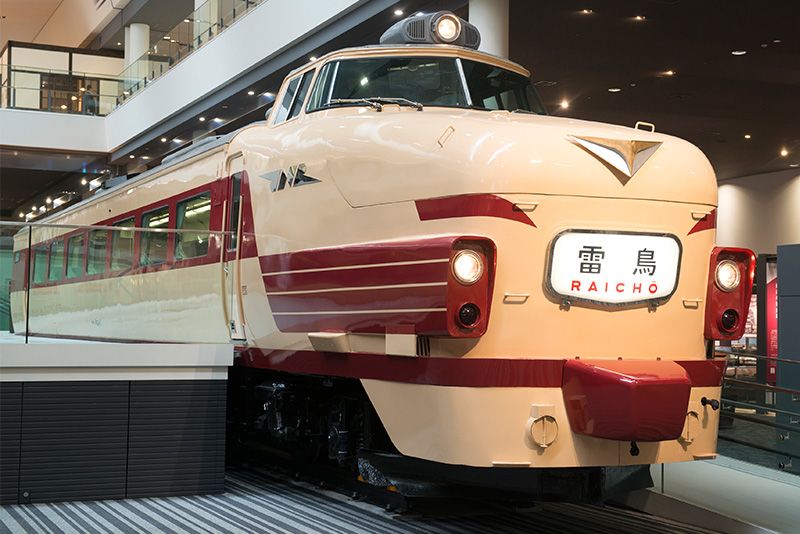 The bonnet-style 489 series express (built 1971).
The bonnet-style 489 series express (built 1971).
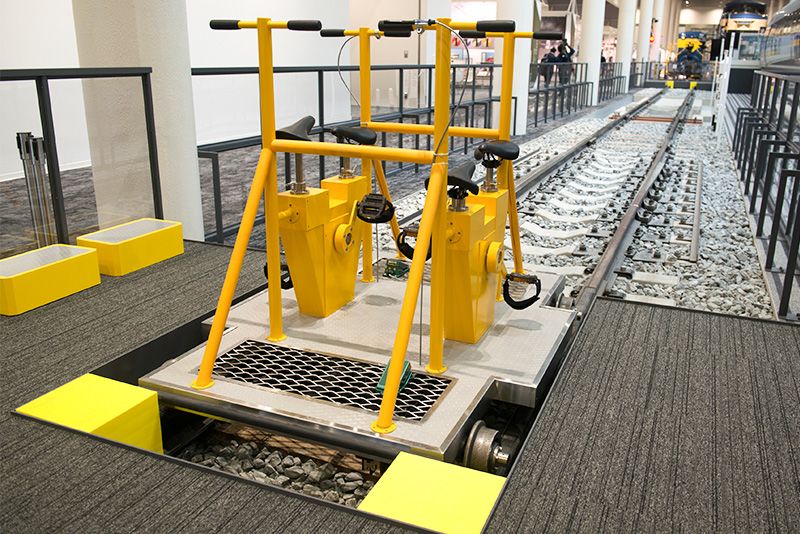 A rail-cycle used by maintenance workers. Visitors can try using it themselves.
A rail-cycle used by maintenance workers. Visitors can try using it themselves.
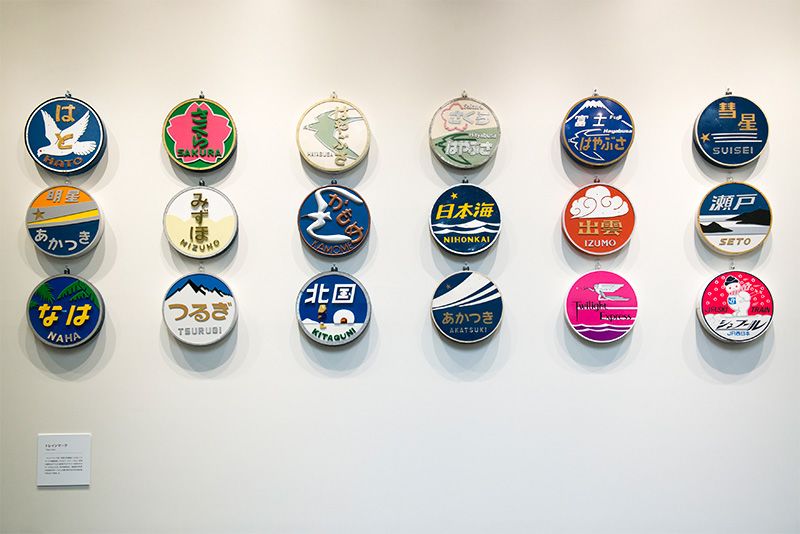 “Headmark” insignias used to indicate trains on a particular route.
“Headmark” insignias used to indicate trains on a particular route.
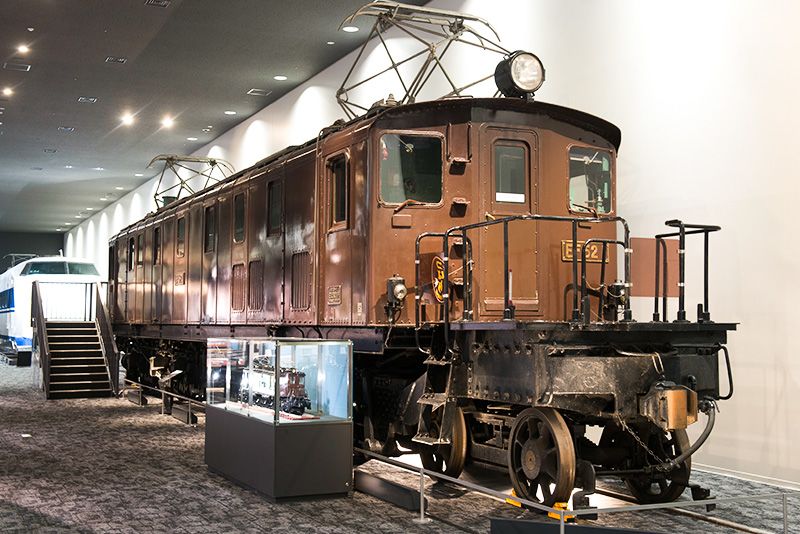 The EF52 (built 1928) was Japan’s first domestically produced electric locomotive.
The EF52 (built 1928) was Japan’s first domestically produced electric locomotive.
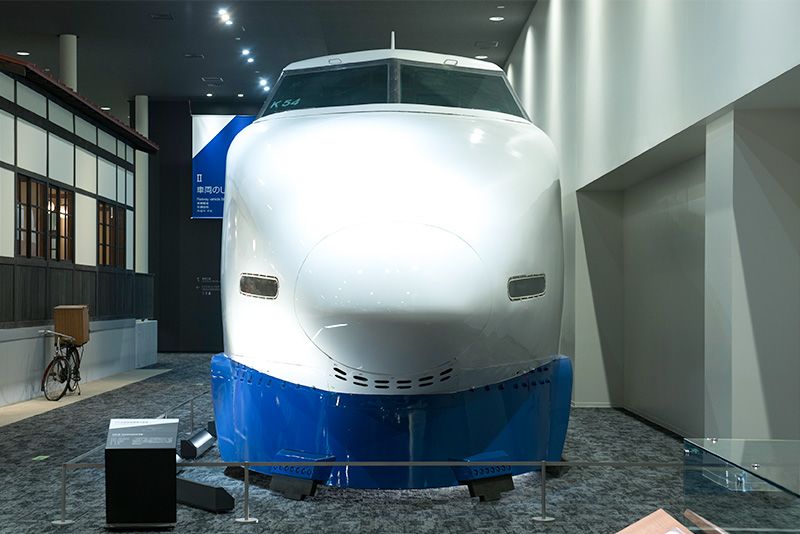 The 100 series (built 1989) used on the Tōkaidō and San’yō Shinkasen Lines.
The 100 series (built 1989) used on the Tōkaidō and San’yō Shinkasen Lines.
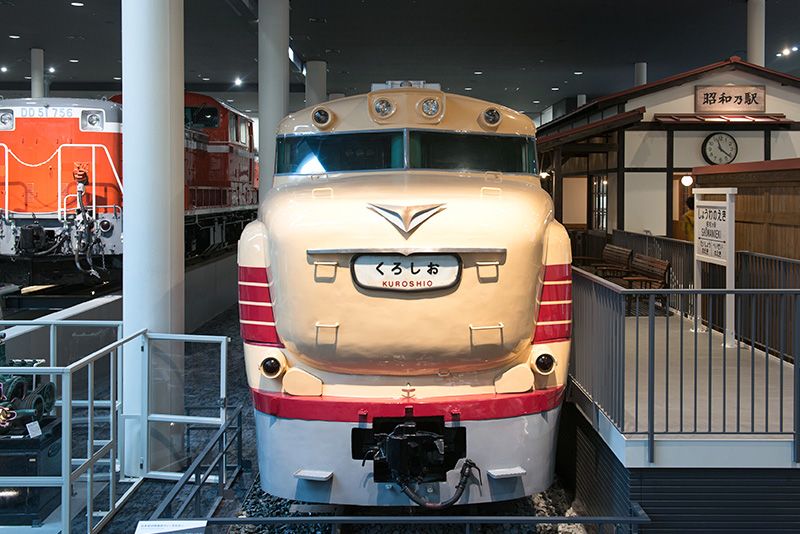 The Kiha 80 series (built 1965) was the first Japanese National Railways diesel express.
The Kiha 80 series (built 1965) was the first Japanese National Railways diesel express.
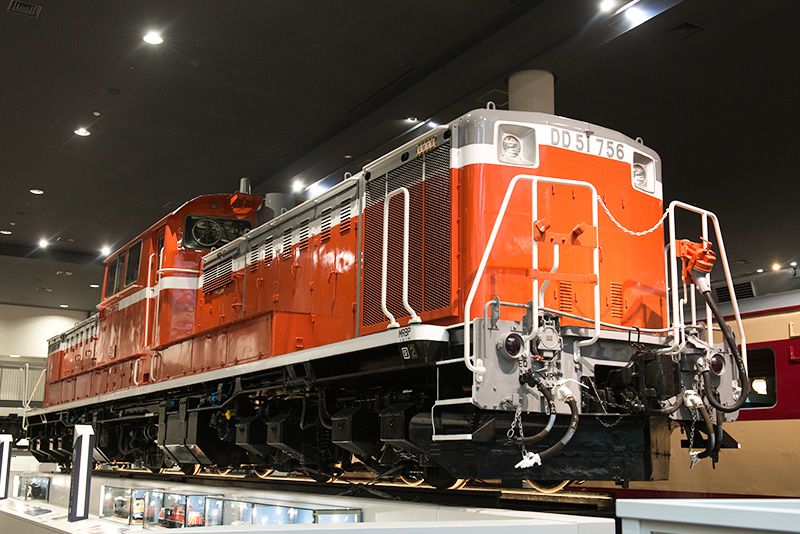 The DD51 diesel engine (built 1972) was used nationwide to replace retired steam locomotives.
The DD51 diesel engine (built 1972) was used nationwide to replace retired steam locomotives.
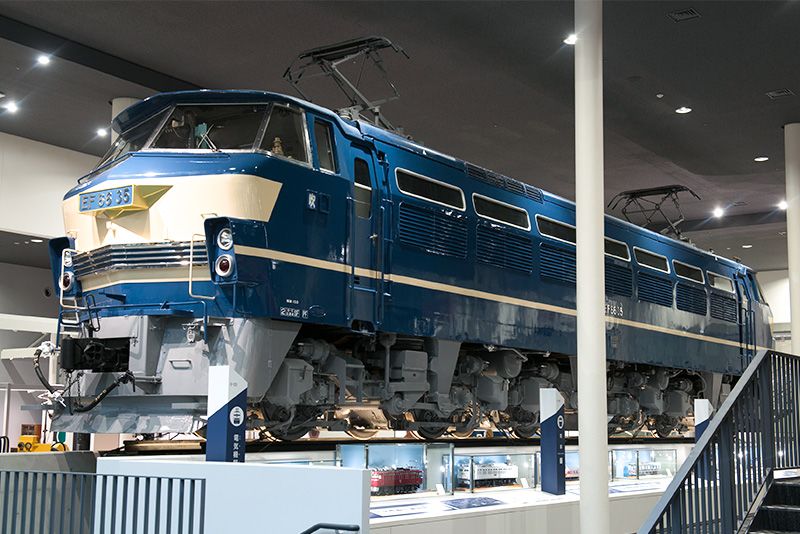 The EF66 electric locomotive (built 1974) was used as a goods train on the Tōkaidō and San’yō Main Lines. Visitors can view the underside of the vehicle.
The EF66 electric locomotive (built 1974) was used as a goods train on the Tōkaidō and San’yō Main Lines. Visitors can view the underside of the vehicle.
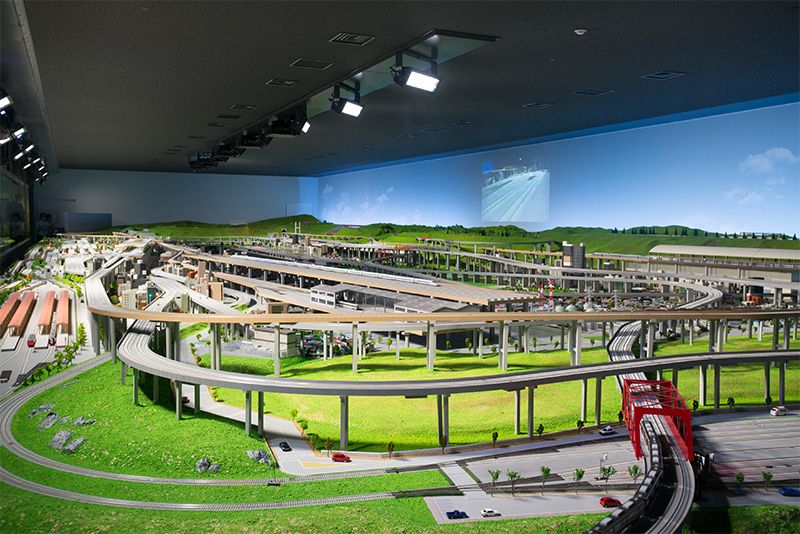 A large diorama on the second floor of the Main Building.
A large diorama on the second floor of the Main Building.
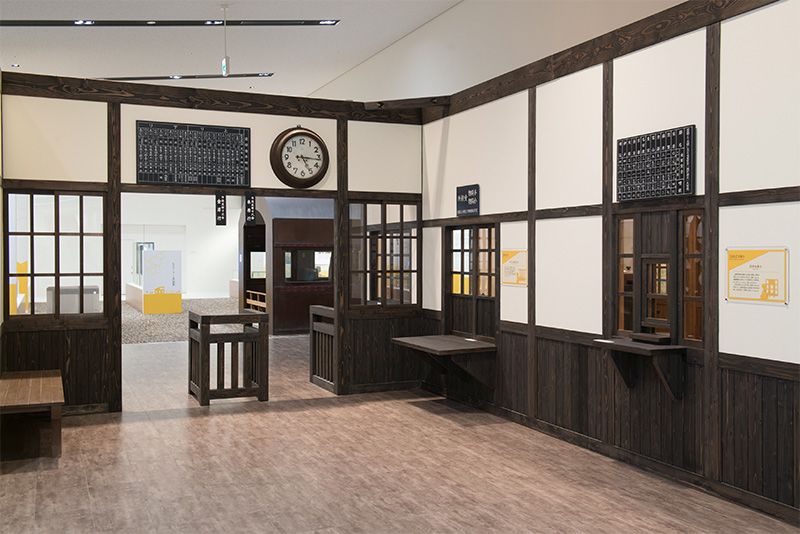 A recreation of a prewar ticket gate.
A recreation of a prewar ticket gate.
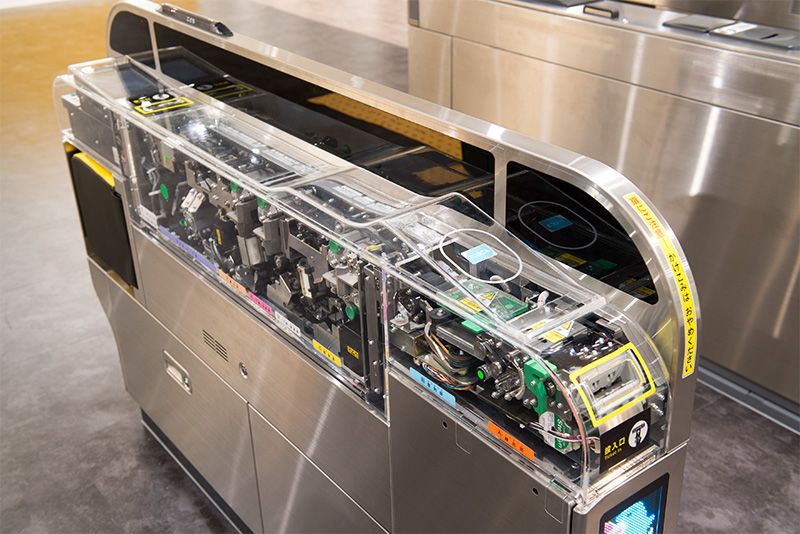 In the contemporary station display, visitors can see how automatic ticket gates work. They can also get special tickets printed with the day of their trip to the museum.
In the contemporary station display, visitors can see how automatic ticket gates work. They can also get special tickets printed with the day of their trip to the museum.
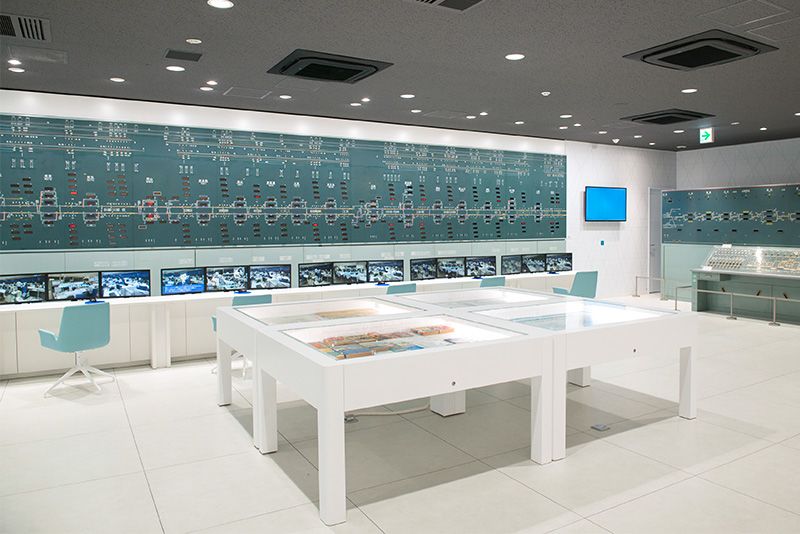 A recreation of a train operations control center.
A recreation of a train operations control center.
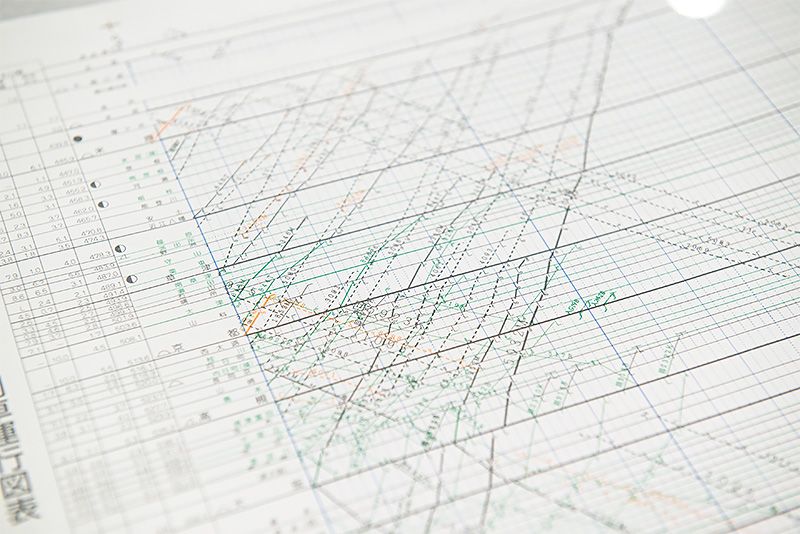 Train timetables for the Tōkaidō and San’yō Main Lines.
Train timetables for the Tōkaidō and San’yō Main Lines.
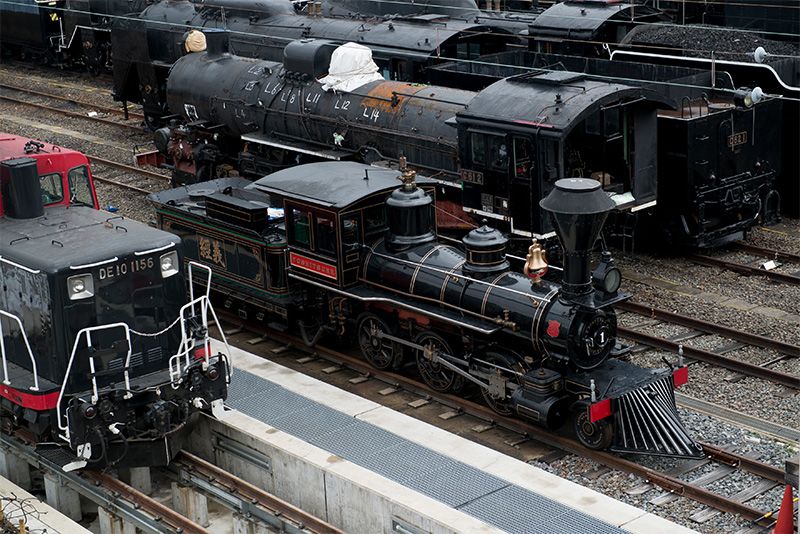 The 7105, a 7100 series steam locomotive. This series was the first to be imported from the United States. It is preserved in the 20-track roundhouse, which dates back over a century.
The 7105, a 7100 series steam locomotive. This series was the first to be imported from the United States. It is preserved in the 20-track roundhouse, which dates back over a century.
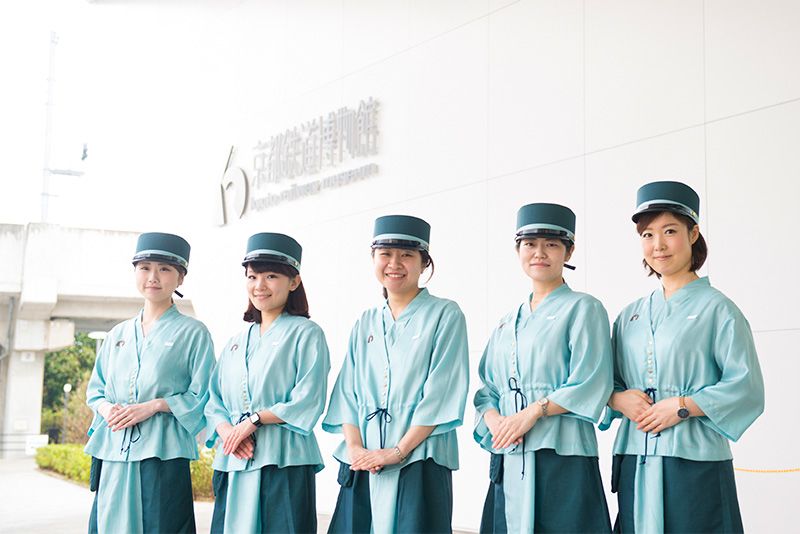 Guides welcome visitors to the museum.
Guides welcome visitors to the museum.
Outline of the Kyoto Railway Museum
Hours: 10:00 to 17:30 (last admission 17:00)Closed: Wednesdays
Admission
Adults: 1,200 yen
University and high school students: 1,000 yen
Junior high and elementary school students: 500 yen
Children (3 years and older): 200 yen
Audio guide available in English, Japanese, Chinese, and Korean
Website:
English: http://www.kyotorailwaymuseum.jp/en/ Japanese: http://www.kyotorailwaymuseum.jp/ Chinese (simplified): http://www.kyotorailwaymuseum.jp/sc/ Chinese (traditional): http://www.kyotorailwaymuseum.jp/tc/ Korean: http://www.kyotorailwaymuseum.jp/kr/ (Originally published in Japanese on May 30, 2016. Photos by Kodera Kei.)
▼Further reading
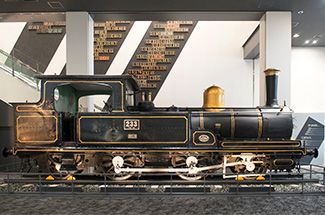 Kyoto Railway Museum: A Showcase of Japan’s Rail Heritage Kyoto Railway Museum: A Showcase of Japan’s Rail Heritage | 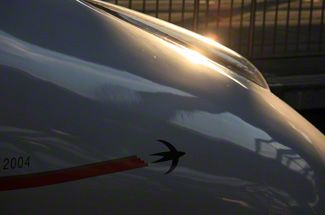 All Aboard Kyūshū’s Designer Trains (Photos) All Aboard Kyūshū’s Designer Trains (Photos) | 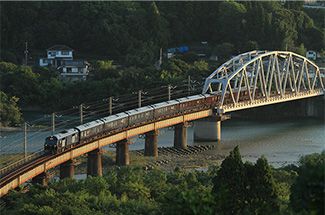 Bye-Bye Blue Train: Japan’s Iconic Sleepers Give Way to “Cruise Trains” Bye-Bye Blue Train: Japan’s Iconic Sleepers Give Way to “Cruise Trains” |
